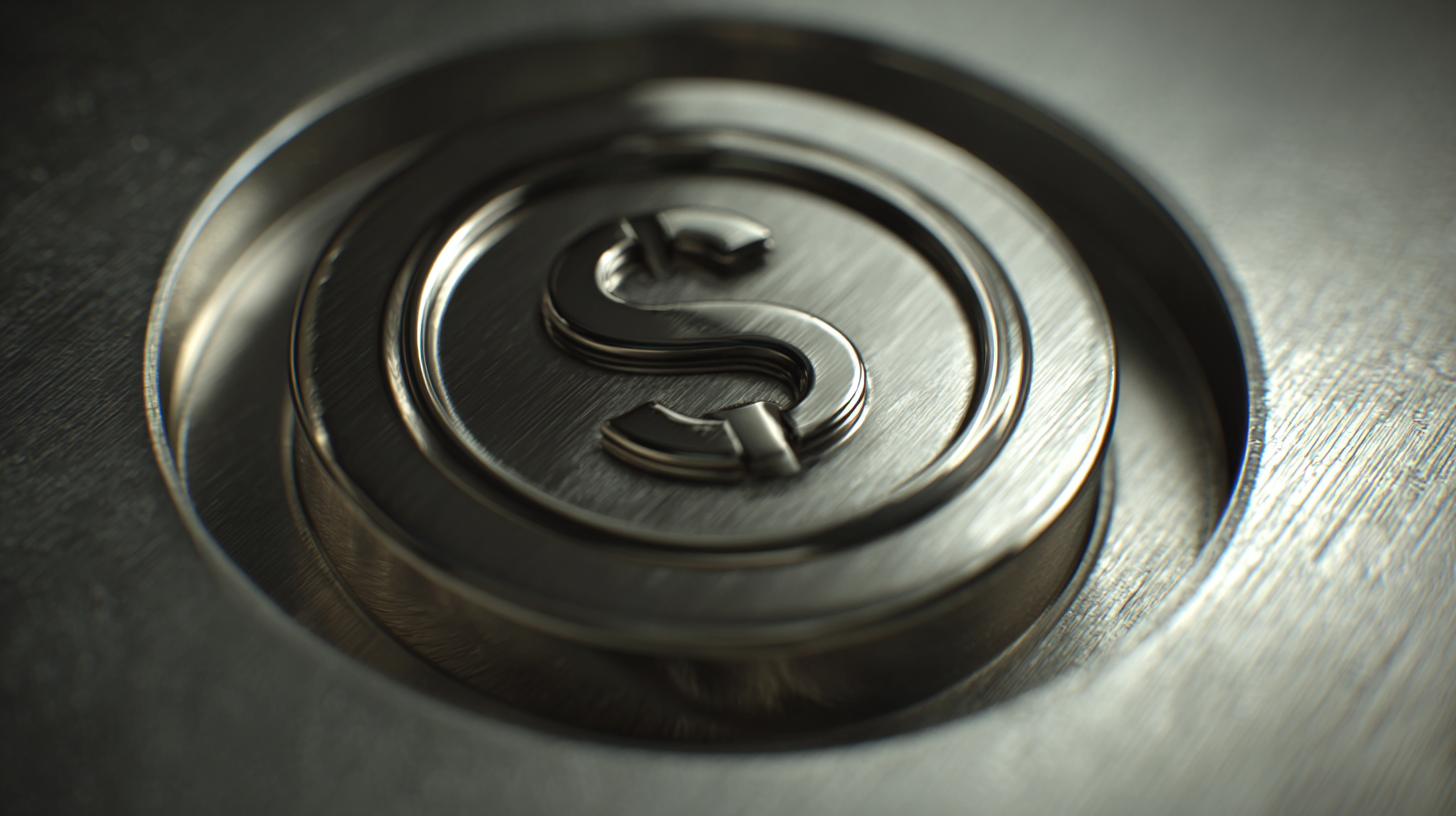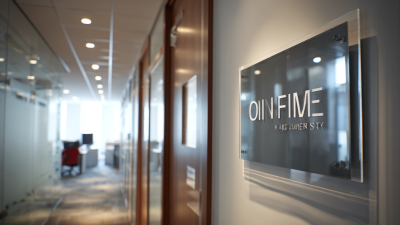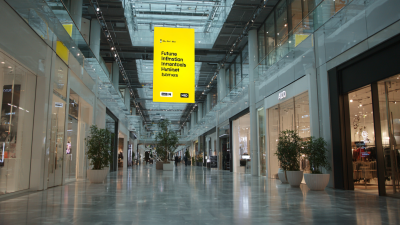



In the ever-evolving world of branding, companies are constantly seeking innovative ways to stand out and make a lasting impression. One of the most effective strategies is the implementation of a Stainless Steel Logo, which not only exemplifies a commitment to quality and durability but also enhances the visual appeal of a brand.
 As consumers increasingly gravitate towards brands that convey strength and reliability, the use of a Stainless Steel Logo becomes essential for modern businesses looking to establish a robust identity. This article explores the myriad benefits of using stainless steel in logos, from its aesthetic versatility to its resilience against the elements, showcasing how this sleek material can elevate brand perception and loyalty in today’s competitive market.
As consumers increasingly gravitate towards brands that convey strength and reliability, the use of a Stainless Steel Logo becomes essential for modern businesses looking to establish a robust identity. This article explores the myriad benefits of using stainless steel in logos, from its aesthetic versatility to its resilience against the elements, showcasing how this sleek material can elevate brand perception and loyalty in today’s competitive market.
By embracing a Stainless Steel Logo, brands can effectively forge stronger connections with their audiences while reflecting their core values of innovation and excellence.
Stainless steel logos stand out as a remarkable choice for brands aiming to cultivate a long-lasting presence in a competitive marketplace. The durability of stainless steel not only enhances the visual appeal of logos but also ensures resilience against wear and environmental exposure. Unlike traditional materials that may fade or corrode over time, stainless steel maintains its integrity, making it an ideal option for businesses seeking to leave a memorable impression.
In a world where brand identity is crucial, the choice of materials for logos speaks volumes. Stainless steel conveys strength and reliability, characteristics that can significantly enhance a brand's image. As companies continue to prioritize sustainability and durability, adopting stainless steel logos can be a strategic move, reinforcing their commitment to quality and longevity. Whether on products or promotional materials, these logos serve not just as identifiers, but as enduring symbols of a brand's values and mission in a modern context.
| Feature | Description | Benefits | Typical Use Cases |
|---|---|---|---|
| Durability | Stainless steel logos withstand harsh weather and environments. | Long-lasting appearance and reduced replacement costs. | Outdoor signage, vehicles, and industrial applications. |
| Aesthetic Appeal | Provides a sleek and modern look with a reflective finish. | Enhances brand image and attractively displays brand identity. | Corporate offices, retail spaces, and exhibitions. |
| Low Maintenance | Easy to clean and requires minimal upkeep. | Cost-effective in the long run and maintains a premium look. | High-traffic locations and commercial establishments. |
| Customization | Can be easily shaped, engraved, or polished to fit specific designs. | Versatile design options to reflect unique brand identity. | Signage, promotional items, and bespoke installations. |
| Sustainability | Recyclable material with a long lifespan reducing waste. | Positive environmental impact promoting corporate responsibility. | Eco-conscious branding and green marketing campaigns. |
Stainless steel logos have become a vital element in modern branding, offering a unique blend of aesthetic appeal and durability. The sleek finish and reflective quality of stainless steel not only elevate the visual identity of a brand but also convey a message of sophistication and permanence. Brands that incorporate stainless steel into their logos often stand out in a crowded marketplace, attracting consumers who appreciate quality and modern design.

Moreover, the use of stainless steel enhances brand recognition through its versatility in various applications, from signage to product packaging. In an era where first impressions are crucial, the ability of stainless steel logos to create a lasting impact is unmatched. Companies that focus on artistic packaging and innovative design can leverage the distinct aesthetic of stainless steel to communicate their values and story, fostering a deeper connection with consumers.
This trend toward premium materials aligns with the growing consumer demand for authenticity and craftsmanship, making stainless steel logos an essential component of contemporary branding strategies.
Stainless steel has emerged as a game-changer in modern branding, showcasing incredible versatility that allows designers to create unique and impactful logos. Its aesthetic appeal combined with structural integrity makes it an ideal material for branding applications. Whether used in sleek, minimalist designs or intricate, sculptural forms, stainless steel can adapt to the vision of any brand, elevating its identity while ensuring longevity against the elements.
The design possibilities with stainless steel are virtually limitless. Recent architectural projects have highlighted its potential, such as innovative office spaces that blend functionality with style, demonstrating how this material can provide dynamic solutions. In the realm of logo design, the fluidity and modern look of stainless steel logos resonate with today's businesses striving to make a memorable impression. By leveraging the unique qualities of stainless steel, brands can craft logos that not only stand out visually but also convey a sense of strength and reliability—attributes that are essential in today’s competitive market.
 Stainless steel logos are not only a symbol of modern branding but also a beacon of sustainability. The use of stainless steel in branding reflects a commitment to eco-friendly practices. Unlike plastics, stainless steel is recyclable and has a long lifespan, reducing the need for frequent replacement. This durability translates to less waste, aligning with the growing consumer demand for environmentally responsible products and practices.
Stainless steel logos are not only a symbol of modern branding but also a beacon of sustainability. The use of stainless steel in branding reflects a commitment to eco-friendly practices. Unlike plastics, stainless steel is recyclable and has a long lifespan, reducing the need for frequent replacement. This durability translates to less waste, aligning with the growing consumer demand for environmentally responsible products and practices.
Tips for Implementing Stainless Steel Logos in Your Brand:
In the fast-evolving landscape of modern branding, the choice of materials plays a crucial role in shaping consumer trust and brand recognition. High-quality materials, such as stainless steel for logos, not only enhance the aesthetic appeal of a brand but also convey a message of durability and reliability. As consumers increasingly seek authenticity and quality in the products they purchase, brands that invest in premium materials are more likely to establish a strong connection with their audience.
Furthermore, the global market dynamics indicate that strength in branding through high-quality materials will be essential for competitive differentiation. The expected growth in the cabinet hardware market, along with the rising demand for luxury items, underscores the importance of maintaining high standards in branding. As industries prioritize innovation and sustainability, brands must harness high-quality materials to resonate with conscientious consumers who value both craftsmanship and ethical considerations. This strategic focus on superior materials not only fosters consumer trust but also solidifies brand loyalty in an increasingly crowded marketplace.
This bar chart visualizes the impact of high-quality materials, such as stainless steel logos, on various factors related to modern branding. Each factor is rated on a scale of 1 to 10, emphasizing the essential role of materials in strengthening brand recognition and consumer trust.






